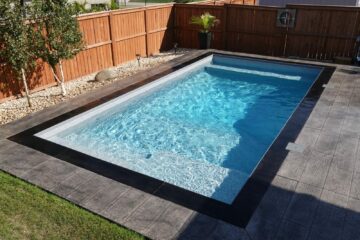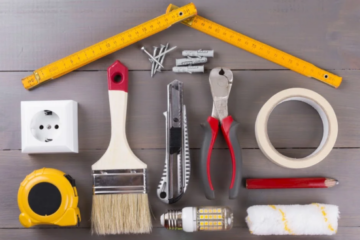
According to the U.S. Energy Information Administration, sustainable energy accounted for just 13% of primary energy consumption. That’s not enough to have a major impact on the ever-escalating threat of global warming.
If you want to help put the brakes on carbon emissions in every way you can, there are several ways you can make a difference by adjusting your lifestyle.
Green energy solutions start at home. Keep reading to find out how you can get started with these worthwhile initiatives.
1. Solar Energy
The sun is the most abundant energy source in our galaxy. It’s reliable, powerful, and unlikely to fail for the next five billion years.
There are four ways to harness the power of the sun in your home. These are:
Photovoltaic Solar Systems
PV systems, otherwise known as solar panels, are one of the best-known and most widely adopted types of green energy today. Despite the high initial installation cost, solar power is a cost-effective and reliable source of energy overall.
You can install off-grid solar power for complete independence from the grid or embrace net metering to help reduce your electricity bills and carbon emissions at the same time.
To make the most of solar power in your home, it’s best to work with a reputable, experienced solar contractor to devise a system that’s best for your circumstances.
Solar Heating and Cooling
Passive solar is one of the easiest and most affordable ways to harness the power of the sun in your home. Large windows facing the morning sun can introduce warmth into your home that lasts the whole day.
Window film can help enhance these effects while protecting your interiors from glare. So, open up your curtains, blinds, and drapes and let the sunshine in.
If you’d like things a little cooler, you could invest in a solar-powered air conditioner. These devices heat water using solar power and use the resulting energy to produce cool air.
Solar Water Heaters
Water heaters are one of the most energy-hungry appliances in any home. They can account for as much as 15% of the electricity you use every day.
Solar water heaters use freely available energy from the sun to heat water for home use. Contractors install a water tank and solar panels on the roof of your home.
This way, they can provide piping hot water for all your household needs via your home’s plumbing system or radiators.
These water heaters use solar thermal collectors to heat water and pass it into a large tank for storage. This water can stay hot long enough to meet your needs in gloomy weather.
It’s much cheaper, more efficient, and environmentally friendly to heat water this way.
Solar-Powered Appliances
These gadgets help reduce your electricity bills and your home’s carbon footprint. They’re powered entirely by their solar systems.
Examples of solar-powered appliances include:
- Solar refrigerators
- Solar cookers
- Solar water coolers
- Solar ovens
- Solar lights
- Solar attic fans
- Solar pumps
The unfortunate downside of these appliances is that they rely on direct solar power, so they won’t work as effectively on cloudy days. You can use backup power from the grid or other green energy sources at these times.
2. Wind Power
Wind power is becoming increasingly popular as a source of renewable energy. If you live in a windy area, you should consider this option, too.
You’ll need around an acre of land to generate enough power to generate abundant electricity this way, so it’s best suited to rural areas.
Under these ideal circumstances, wind turbines can satisfy as much as 90% of your energy needs. Smaller, roof-mounted wind turbines can still help reduce some of your electricity bills and carbon emissions, though.
It’s important to check your local permissions before considering wind power. Most places have zoning and permitting requirements associated with this energy source.
3. Microhydropower
Many states already have large-scale hydroelectric generators in place as part of their grid infrastructure. You can also use this type of green energy at home if you have access to a source of running water, like a stream.
By building a dam or barrier, you can create a reservoir with a controlled flow of water to drive a turbine. Hydropower is more reliable than both wind and solar power, and you can also store the energy it creates for use during peak periods.
In this way, some residential hydropower systems can generate as much as 100 kW of electricity. Most homeowners need only a fraction of this power to meet their electricity needs.
You’ll need an engineer to help you set up your microhydropower system.
If you have a flowing stream on your property, you can opt for an in-stream generator. These small drop-in devices can generate as much as 2.4 kWh of electricity per day.
4. Bioenergy
Bioenergy comes from converting solid fuel created from plant materials into electricity.
It involves burning these materials to produce energy, which can create some emissions.
However, most of these fuel sources comprise industrial, agricultural, and domestic waste products. So, it’s a much less environmentally harmful and more cost-effective practice than burning fossil fuels.
5. Hybrid Green Energy Solutions
Each of the above technologies has limitations. Yet, using a combination of them can help you go green in an affordable way. Some of the aspects you could combine to create a comprehensive home energy system include:
- Solar power and hydropower for battery backup
- Wind power to run your lights
- Biomass solutions for heating and cooling
- Solar for water heating
- Solar power to run small appliances
There’s no shortage of green energy solutions for environmentally savvy homeowners to take advantage of nowadays.
When you implement these solutions one at a time, you reduce the financial impact of setting them all up at once. In this way, you can get started on your green journey sooner.
Go Green for a Brighter Future
Green energy solutions are just one of the ways you can help create a healthier planet. Other options include water-saving devices, cutting down on waste by recycling, and embracing sustainable landscaping.
Are you eager to start making a difference? Browse our blog for more eco-friendly lifestyle ideas and tips.










